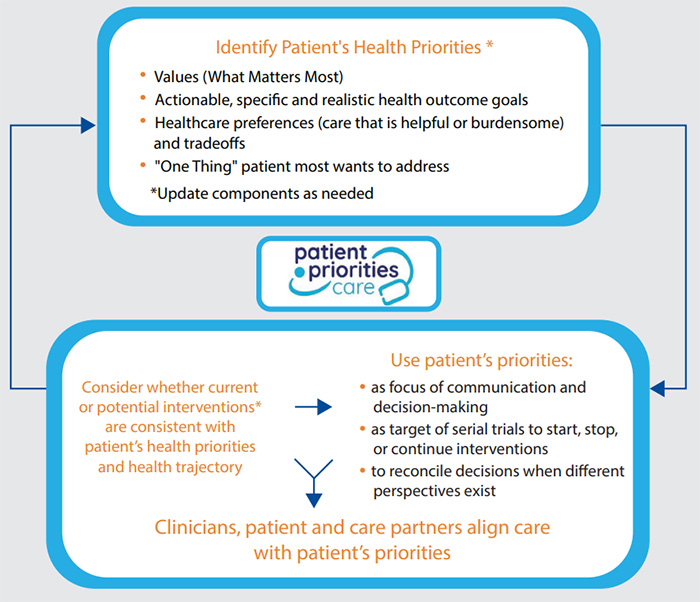
|
|
Innovation UpdateAligning Care with What Matters Most to Veterans with Multiple Chronic ConditionsAs Veterans age, they confront an increasing number and complexity of chronic conditions and disabilities. Nearly two-thirds of older adults live with multiple chronic conditions (MCC). The current approach to managing MCC, based on adherence to single-disease clinical practice guidelines, fails to provide optimal care. Veterans with MCCs face increased risks of adverse outcomes with the application of multiple single-illness guidelines, including guidelines for drug-drug and drug-disease interactions and the harms of polypharmacy. Treatment decisions fail to focus on outcomes most important to Veterans, including living independently in one’s home and engaging in meaningful social relationships. Further, patients, caregivers, and clinicians endure the workload of multiple disease guidelines, particularly when this burden does not align with patients’ goals. As Ken Rockwood eloquently stated, “the speciousness of the ‘my-problem-list is longer than yours’ approach is betrayed by the need to do something with the problems so identified.”1 The situation demands a paradigm shift in decision-making that results in provision of the appropriate amount of care to achieve what matters most for patients and their families appropriate amount of care to achieve what matters most for patients and their families. VACO Geriatrics and Extended Care and VA Whole Health, Patient Priorities Care cultivates personalized, patient[1]centered care whereby clinicians recommend the care that achieves the priorities of Veterans with MCC. Patient Priorities Care is an approach that aligns treatment decisions with patients’ health priorities rather than disease guidelines. PPC (see Figure) is a structured process whereby a facilitator first guides patients to identify their priorities: a) values (what matters most), b) specific, actionable, realistic health outcome goals, c) healthcare preferences (what patients are willing and able to do or receive), and d) the ‘one thing’ that the Veteran most wants to address to achieve what matters. Then clinicians determine if current care is consistent with the patient’s identified health priorities and trajectory. Clinicians can use the patient’s health priorities as a focus for communication with the patient, as the goal for serial trials to start, stop, or continue interventions, and to reconcile differing recommendations and clinical tradeoffs. The PPC approach significantly reduces treatment burden, encourages deprescribing and the use of home and community services that align with patients’ priorities compared with usual care.2,3 The PPC approach is a recognized Whole Health clinical care practice. We are currently conducting a randomized clinical trial of the PPC approach in VA primary care at the Michael E. DeBakey and West Haven VA medical centers. Patient Priorities Care is a feasible and innovative approach to care that achieves what matters most for Veterans with chronic conditions. 
References
|
|